A lot of what I was challenging through my series Essentially Normal Studies was conditioned notions of normality, whether through illness, disability and identity, or through the way we categorise and perceive our own bodies – and it was interesting how many found their own points of context and connect within this.
Artist Devika Sundar takes us through her journey in which she has had to battle chronic pain and illness, finally turning the experience into a personal, therapeutic and public expression
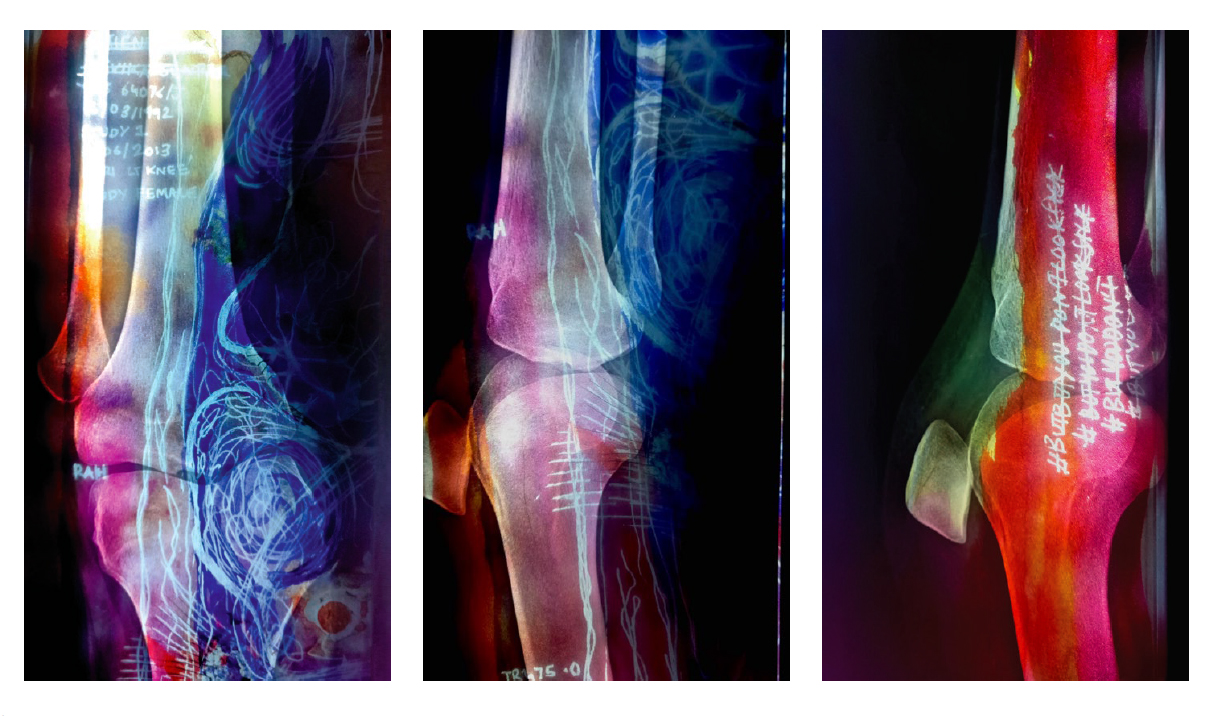
Take us to the beginning of your story.
Art has always followed me over the years into its own complicated, meandering, and shifting journey. Shy and reserved growing up, quietly painting in little huddles and corners over the years gave me spaces of retreat, comfort, security and a happy escape into imaginary environments in my head.
However my relationship with art started shifting around the time I was 17. Due to the initial symptoms of a chronic illness, I began developing progressive severe chronic pain in my body, causing difficulty in my ability to paint and create the way I used to.
In 2011, I stubbornly shrugged off my health issues and left India, beginning my undergraduate in Sarah Lawrence College, New York, concentrating in anthropology, art history and visual arts. Finding ways to work around my body, I began experimenting with different mediums and channels of creating, exploring collage, assemblage and mixed media within my work.
I was able to display these explorations in 2012, exhibiting a series of work at Alliance Francaise, Bangalore. However soon after, in the following year I had to withdraw my degree and come back to Bangalore due to medical reasons. I couldn’t create for two years.
In 2015, when I finally began getting back to completing my degree in Contemporary Art Practice at the Srishti Institute of Art, Design and Technology, I observed a clear shift in my work, tackling projects that moved beyond myself into a larger cultural commentary.
In my graduation thesis, Essentially Normal Studies, I explored issues of invisibility around hidden illness and disabilities, within spaces that mediated between art, identity, and the ethics of medicine and healthcare. The project was later expanded into a solo Exhibition at Gallery Sumukha in October 2018, and shared as a keynote presentation at MYOPAIN 2018, an international medical conference organised by the Indian MYOPAIN Society.
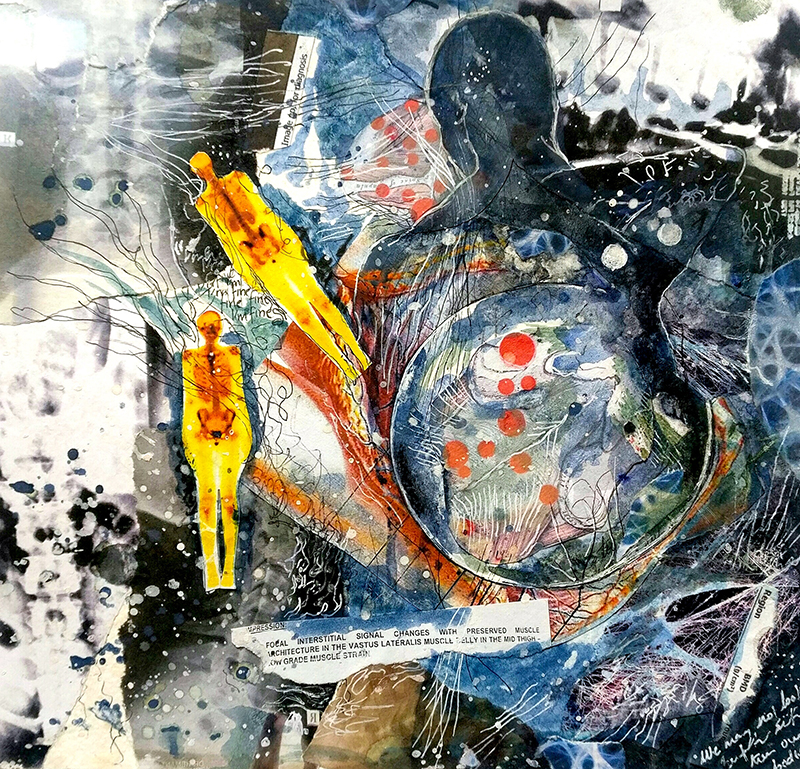
How did you discover art as a therapeutic tool?
Dealing with progressive health issues over the recent ten years left me not only frustrated, tired and confused but rashly, stubbornly fighting myself and my body, refusing to give up what I believed I loved.
Only recently, in getting back to creating and working, art began taking on a different value. While my body no longer found familiar comfort in the physical process the way it used to, I realised in digging deeper, the ability and power of art to connect, comfort and find shared and related meaning; in expressing voice and form to collective experiences and emotions that otherwise stay ambiguous, confusing and isolating to verbalise. In many ways I saw art translate into my own personal healing and release.
I knew that in the months following my exhibition in 2019, I wanted to dial back into a breathing space before rushing into a new project, and experimented with an idea I had for some time – of setting up an intimate, collaborative and collective space that allowed for connection and shared communication, through art as its medium.
In the initial few months I experimented informally with closed group sessions with friends and relatives – trying to discover ways to use my own personal explorations with different mediums, and incorporate these as therapeutic exercises into the space. I slowly took this endeavour to larger communities and, eventually, founded Hanno Terrace Studio: a therapeutic, collective, outdoor open studio.

Take us through your process and continuous frameworks of reference.
Before beginning a new project, I’ve begun the practice of maintaining a journal, where I continuously add in collected notes, sketches, scribbles and imagery over time, building a textual and visual archive. I build on these by expanding thoughts from collected research papers and readings involving cultural, anthropological and phenomenological studies and explorations, more recently around themes of transience, identity, body, belonging and memory.
What is the primary role of an artist in society?
I think the primary role of an artist in society is to discover non-verbal paths of articulation and expression, challenging ways of removing viewers from their pre-conditioned cultural realities. In a world full of noise, I feel art provides a space for silence and introspection to examine the systems and structures we live in and find deeper related meaning in each other; eliciting compassion and empathy.
How do you describe yourself in the context of challenging people’s perspectives via your workshops and art?
Last year, situating Essentially Normal Studies against a larger cultural and medical framework and conditioning, allowed me to examine many issues in the ways we contextualise and relate to each other. In a culture that conditions us to see our value and identity, attached to capitalistic measures of productivity – we continuously place significance and meaning on finality, on the visible, tangible, decisive markers of success.
However, my work is drawn instead toward the silent, indefinable, incommunicable qualities of human experience. In my recent artistic explorations, I search collective transitory human states of identity and belonging, touching upon narratives of invisibility, illness, and memory.
Often within the art world I observe a lot of elitism and exclusivity in certain circles. However, through the workshops I try to challenge this by encouraging collective spaces for art and language for everyone.

What are you looking for when you look at other artists’ work?
I think when finding connection with other artists’ work I search for an experience that allows me to shed any preconceived baggage I might have as an artist, enabling me to simply become a viewer in front of their work. Pieces that move me are those that have allowed me to step out of my own reality and find myself consumed in the artist’s constructed world, offering a little intimate vulnerable window into their inner thoughts and mind.
Artworks that have especially moved me are installations that are immersive, expansive and experiential in both context and form. I remember two of these recently being the Sea of Pain by Raul Zurita and Room of Lies by Sunil Padwal at the Kochi Biennale, 2016.
Which shows, performances and experiences have shaped your own creative process? Who are your maestros?
Two artists I’m grateful and fortunate to know and who have significantly inspired and influenced me in ways they may not realize, are Bess Frimodig, Swedish printmaker and artist, and Lata Mani, feminist historian, writer and filmmaker. Bess’s work involves collaborating community and social outreach through printmaking, using art as a space for language and dialogical connection. I’ve had conversations with her that have shifted the way I currently think. I’m especially in love with her journals – deeply personal, raw, beautiful and vulnerable.
Lata in her writing and film, and in our conversations, has founded and taught me courage in the intimacy of threading personal experience within a larger, shared and collective human experience.
I remember years back when reading further on Frida Kahlo, her strength to create unabashedly and powerfully, drawn from her pain and circumstances, allowed me to see the strength and courage needed to embrace vulnerability and find authenticity in the work I explore.
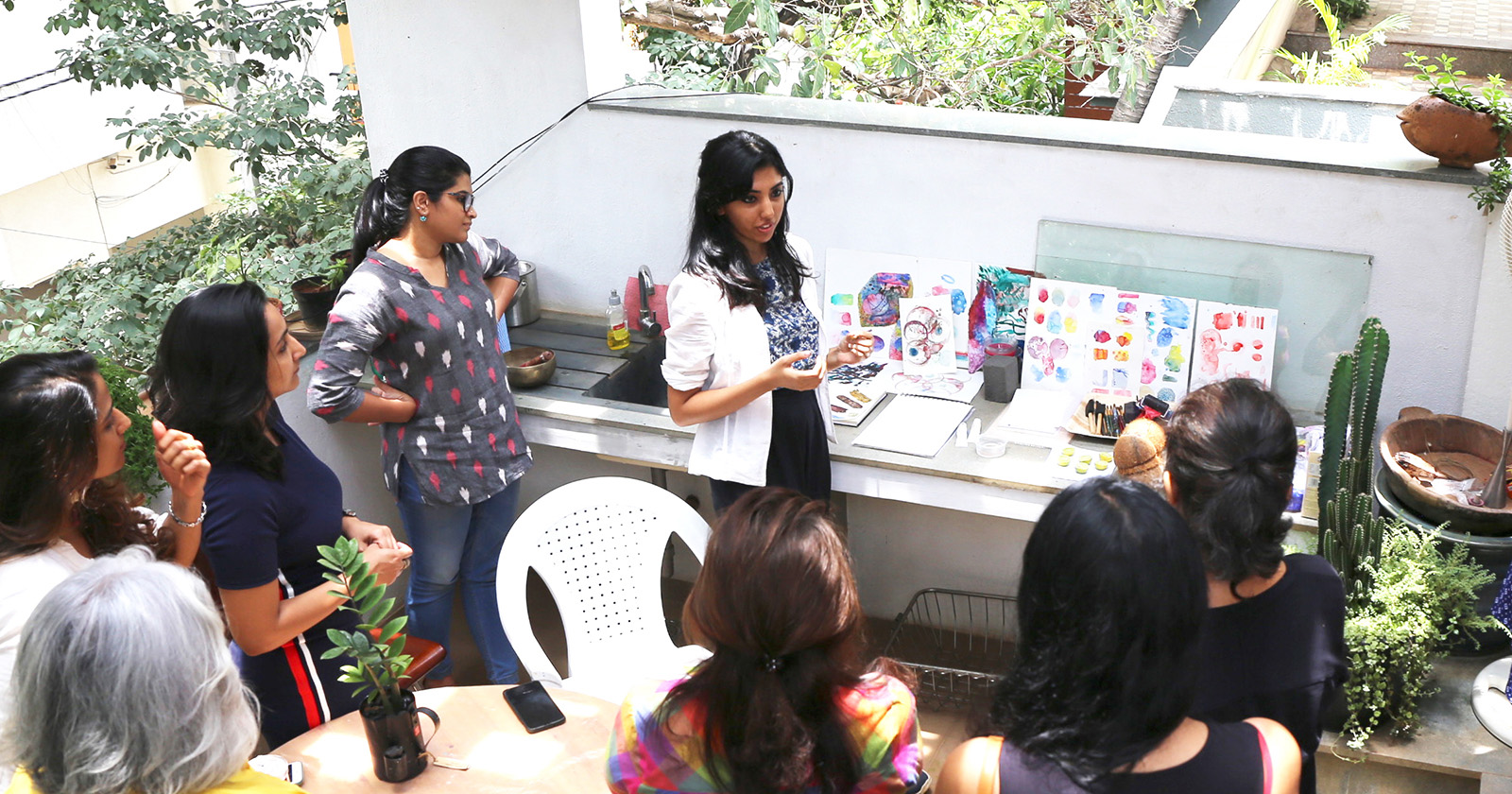

Tell us about your evolution and your commitment to art as medium of therapeutic release.
Over the last year, we’ve had many workshops and sessions in the studio, encouraging and creating spaces for expression and self-exploration through art. What has been interesting is the range of participants in the workshops, coming from diverse backgrounds and ages; children from the age of six to adults between 18 and 60. What I’ve observed through the workshops is a collective human desire to engage and negotiate silent spaces for self- expression, communication, outlet and release, away from the digital noise. Art has been the only driving constant in my life, pulling me through many shifting experiences over time.
How do you balance your own work and the workshops?
This is a difficult question to answer because it’s something I’ve been largely struggling with this year. When I began the studio and workshops, I found most of my week going into administrative activities such as promoting on social media, participant registration, marketing, designing posters, etc. This left me with very little time, physical energy or mental space to develop and explore my own practice.
Being able to maintain both at the same time can consequently become conflicting. To continue the studio sessions I need to be available, engaged and in the forefront at all times, while when developing my own work I search for solitary spaces of escape.
Constantly being engaged outward can become emotionally draining at times. It has been a confusing journey of trying to find ways of conserving my own emotional energy.
However what has been valuable is taking the collective explorations and engagement within the studio and bringing it back within my own practice, while also finding passages of time to refuel myself. It’s also important for me to take mini breaks from everything and surround myself with friends, recovery and travel.
How did your audience interact and react to your first show?
This was am extremely overwhelming experience – placing in front of me a year’s worth of work and research around a project that was extremely conflicting, challenging and difficult, yet releasing and deeply meaningful at the same time.
I hadn’t expected to meet so many people, who shared so deeply with me about their own private battles and experiences, and could relate to the work in their unique, specific and individual ways. A lot of what I was challenging through this series was conditioned notions of normality, whether through illness, disability and identity, or through the way we categorise and perceive our own bodies – and it was interesting how many found their own points of context within this.
Taking the exhibition series later into the MYOPAIN conference allowed me to present the work within a medical community, which was gratifying in a different way. Seeing a doctors and health professionals react to the work through situating and challenging their own biases and judgements, and receiving a shift in their thinking through the channel of art was something I never expected when beginning this series.
How do you deal with the conceptual difficulty and uncertainty of creating something new?
I think the uncertainty is something I enjoy. The part of the process that involves ideating, research and conceptualising is the part that I actually find the most exciting, as I love jumping and discovering different points of connection in ideas as they develop in front of me. What can become overwhelming is getting over this hump and actually beginning material work. It sometimes feel safe and comforting to stay in the phase of ideating as you feel anxious about whether your forms will meet the ideas developing in your mind. I’ve been recently finding it difficult to know when to let go, and simply free and allow concepts to translate and develop their own journey and form.
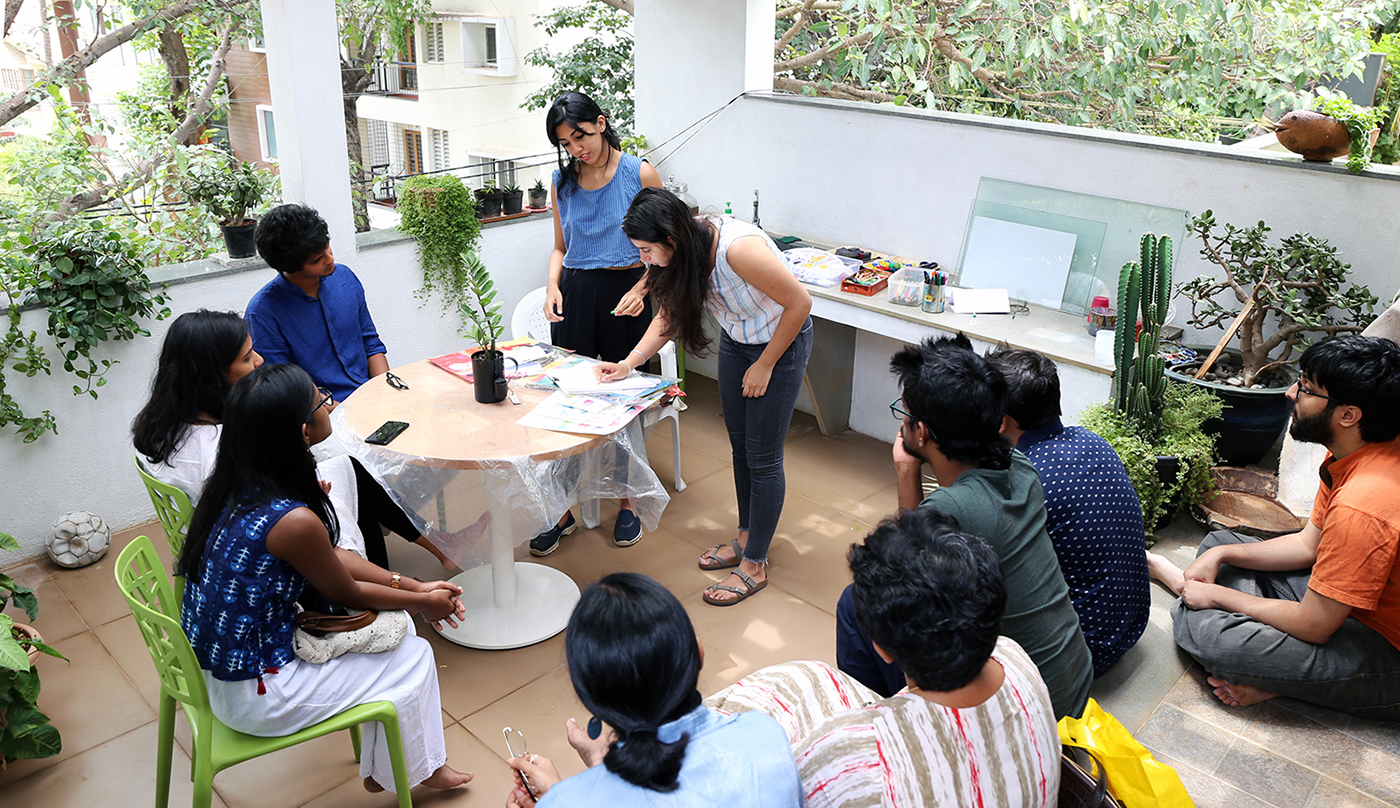
How do you help first-timers and non-artists let go of their mental-blocks to do the same?
Through the workshop exercises, participants are given a beginning path and direction within which they are able to release their thoughts while simultaneously allowing enough space and flexibility for interpretation within these explorations. Different people have different ways of beginning. For some it might be responding to an external prompt and exercise while for others it feels easier to access exercises through internal thoughts and emotions.
As the exercises in the studio are simple, freeing and meditative, I try to encourage them against spending too much time conceptualising thought or form as this can create dissociative barriers and blocks before they begin. Instead by quickly translating movement to whatever they are feeling through following their hand as it flows instinctively on paper, they are able to later reflect and observe the imagery and explorations that develop from this.
What is one imperative piece of advice you would give to someone who wants to get into art but has no idea how.
Buy a sketchbook. Go to your nearest stationery store and invest in a small journal or sketchbook and along with that a pen, pencil or little box of paints – whatever you might want to begin trying with. What a sketchbook allows versus a loose sheet of paper is free non-judgmental growing pages for experimentation and journaling, meant only for you. The important thing to remember is to just start and not over think. The only honest way to begin is simply, to begin.
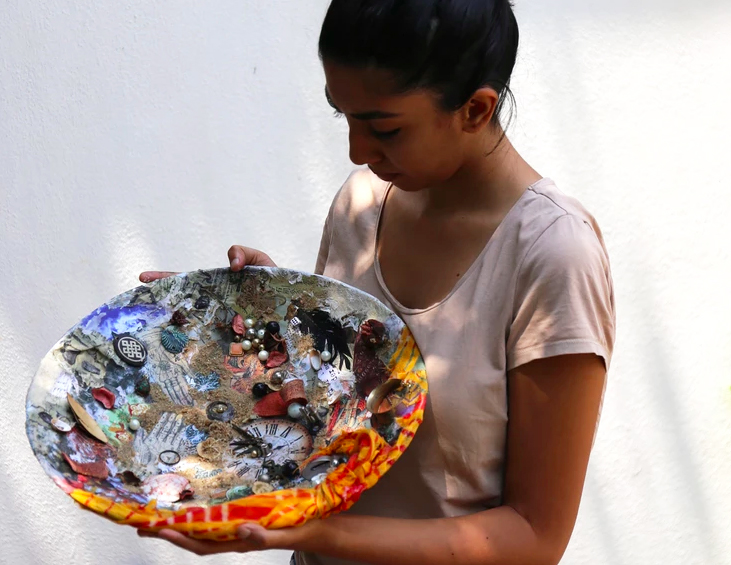
How does your interaction with a workshop attendee evolve from the initial interface to the working-involvement-relationship?
Each person that attends the workshops arrives with different intentions and desires to explore. Usually before I begin the personal sessions, I have a conversation with each of them on the phone and also through mail, where I touch base with them, helping me understand what they are coming for and the possible spaces of expression they would like to explore. Through the course of my relationship with them, I’m also able to understand them as human beings a little better, observing the way they work, their processes and the way they respond and navigate through internal and external feelings and ideas. Each person comes with their own vulnerabilities and barriers, and over time we find ways to explore, shift, and release these as well as form a safe and trusting relationship between each other.
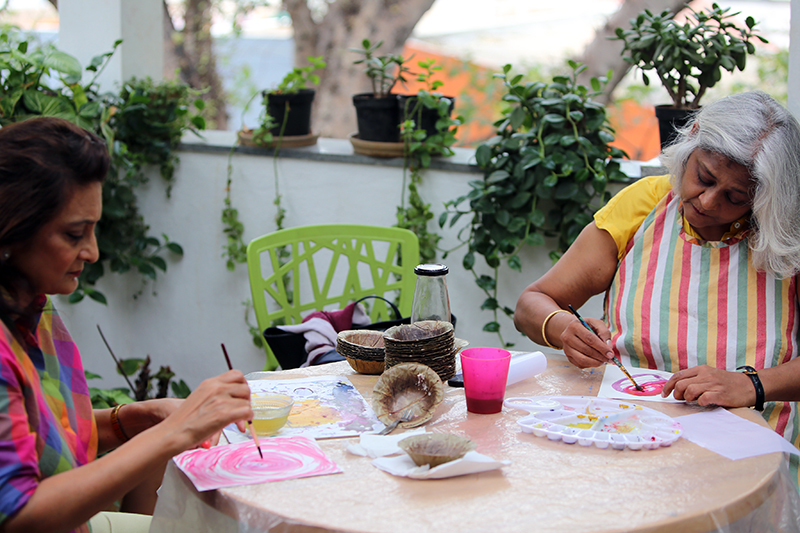
You’ve spent a lot of time amongst artists in flow. What have you observed?
What has been interesting is how unique each individual’s process and journey is. While some require a careful sense of structure and direction while working, others respond very loosely and flexibly. It’s been especially interesting seeing their individual personalities being reflected in their work.
I’ve also observed how the spaces and manner in which they work vary – while some need their own corner of quiet to work independently, others enjoy working around each other. The pace in which they create also changes with each person – the way they hold a paintbrush and move their hands on the page. Some are slow, careful and tender, while others are reckless and free.
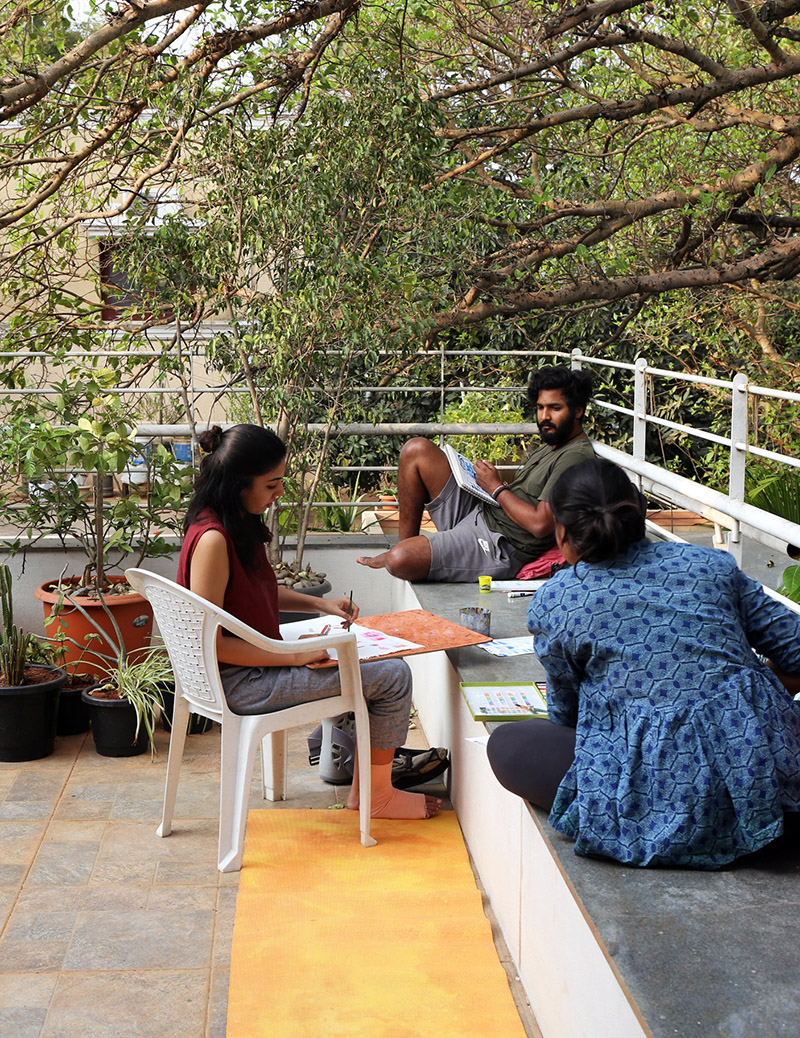
What are you working on now? What’s coming next season?
I have a children’s Open Studio coming up. I am exhibiting a series of work created within an eight-week children’s workshop discovering surrealism through nature, exploring everything from magical hybrid beasts, trees and plants that sing and dance, mythical sea creatures, manic monsters and enchanted forests. Their work has been extremely dynamic, playful, beautiful and strong. I’m really excited to share this with the studio community.
Before the end of the year, I am also planning an Open Studio of my own work at the studio, displaying and selling paintings, monotypes and prints, created and collected over the years. Along with these I plan to also display some of the work by participants in our studio workshops and sessions.
Over the coming year I plan to explore the studio further as a creative and collective space for artists with diverse ideas and processes to come together.
Besides this, over the last year I have been working steadily on putting together research, proposals, sketches and writing for two possible projects. I also look forward to possible collaborations and beginning material work over the following year.











Add Comment